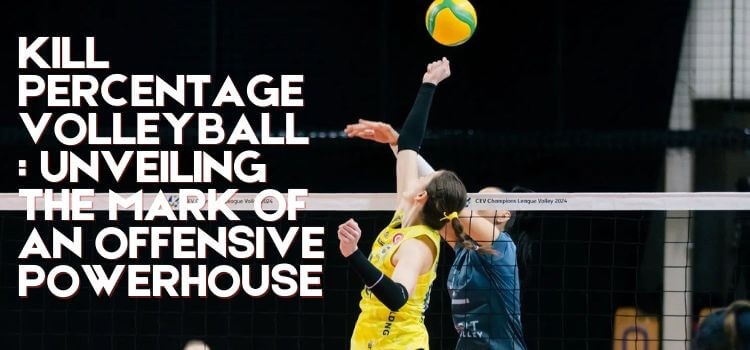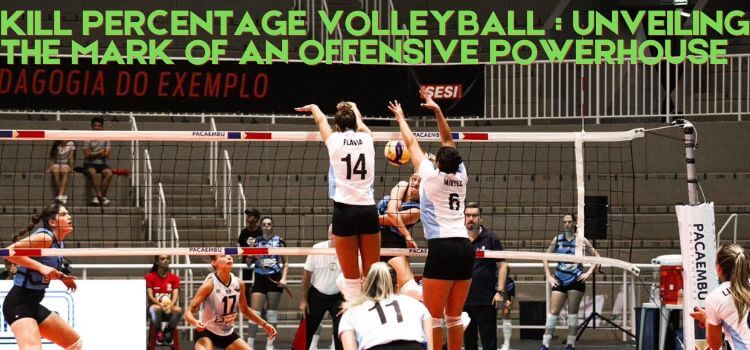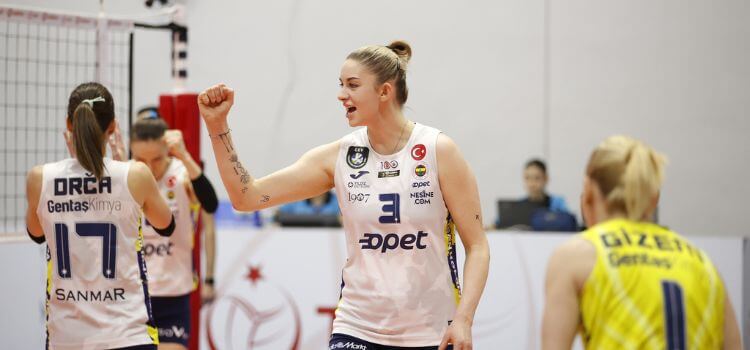As an Amazon Associate, I earn from qualifying purchases
Dominate the net with a powerful understanding of kill percentage volleyball. This comprehensive guide delves into the secrets of offensive dominance, equipping you to dissect attacker performance and optimize your own game.
Volleyball ignites with the thunderous crack of a perfectly executed spike. But how do we truly measure the effectiveness of these attacks? Enter the realm of kill percentage volleyball, a statistic that unveils the mark of a true offensive powerhouse. Explore its power, limitations, and how to leverage it for strategic victory.
Demystifying Kill Percentage in Volleyball The battle for control rages at the net. But how do we quantify the effectiveness of an attacker’s offensive strategy? This guide unveils the secrets of kill percentage volleyball, a key metric that separates the dominant hitters from the rest. Learn how to interpret and utilize this valuable statistic to elevate your game.
kill percentage volleyball: Unveiling the True Mark of an Offensive Powerhouse
Volleyball, a sport of electrifying rallies and gravity-defying attacks, thrives on offensive dominance. Players launch themselves at the net, unleashing powerful swings that aim to overpower the opposing defense and score points.
But how do we truly measure the effectiveness of these attacks? While statistics like hitting percentage offer valuable insights, the real story of offensive prowess lies within kill percentage.
Kill Percentage: A Laser Focus on Offensive Domination
Kill percentage takes a direct approach, solely focusing on an attacker’s ability to convert attempts into points. Here’s the formula:
Kill Percentage = Kills / Total Attempts
Decoding Kill Percentage:
A high kill percentage signifies a potent attacker who consistently overpowers the defense. Players with percentages exceeding .400 are considered exceptional offensive threats. Let’s break down what this means:
High Kill Percentage: A player with a kill percentage of .450, for example, successfully converts 45% of their attempts into kills. This translates to a dominant offensive presence, forcing the opposing team to scramble and adjust their defensive strategies.
Low Kill Percentage: Conversely, a kill percentage below .200 suggests struggles in converting attempts into points. This could be due to factors like facing a strong block, inconsistent hitting technique, or needing to adjust shot selection for better strategic execution.
Limitations of Kill Percentage volleyball:
While kill percentage provides valuable insights, it’s important to understand its limitations:
Ignores Errors: It doesn’t account for unsuccessful attempts, which can be crucial indicators of consistency and risk-taking tendencies.
Doesn’t Consider Shot Selection: Strategic tips and dinks that might be tactically sound aren’t reflected, potentially underestimating the attacker’s overall contribution.
Kill Percentage in Action: Analyzing Offensive Performance
Let’s use an example to illustrate how kill percentage helps analyze offensive performance:
Imagine two attackers, Player A and Player B, facing off in a close game.
Player A: Has a kill percentage of .400, with 20 kills on 50 attempts.
Player B: Has a kill percentage of .300, with 15 kills on 50 attempts.
While Player B has the same number of attempts, Player A exhibits greater offensive dominance by converting a higher percentage of attempts into kills.
This translates to putting more pressure on the opponent’s defense and contributing more directly to scoring points.
Optimizing Kill Percentage: Strategies for Attackers and Coaches
Now that we understand the significance of kill percentage, let’s explore how players and coaches can work towards optimizing it:
For Players:
Develop Power and Accuracy: Focus on drills that improve explosiveness, proper hand positioning, and efficient swing mechanics to maximize hitting power and accuracy.
Refine Shot Selection: Analyze defensive positioning and choose attacks that exploit weaknesses. Practice strategically utilizing tips, dinks, and line shots when appropriate.
Maintain Mental Toughness: Stay focused even under pressure and make sound decisions throughout the game.
For Coaches:
Develop Players’ Offensive Skills: Design drills that target hitting power, accuracy, and shot selection skills.
Emphasize Strategic Decision-Making: Incorporate drills that simulate game situations and require players to choose the most effective attack based on the opponent’s defense.
Analyze Match Data: Utilize kill percentage data alongside other metrics to identify areas for improvement and tailor training regimens accordingly.
Beyond Kill Percentage: A Holistic Approach to Attacking
Kill percentage is a powerful tool, but it shouldn’t be the only measure of an attacker’s effectiveness. Here are other factors to consider:
Hitting Percentage: Provides a broader picture by including both successful kills and unsuccessful attempts.
Shot Selection: The ability to choose the most effective attack for the situation
Versatility: Being able to adjust attacks based on the opponent’s block and game situation
Footwork and Approach: Powerful and controlled movements for a strong, efficient swing
By combining kill percentage with a holistic analysis of attacking skills and strategic decision-making, coaches and players can unlock the true potential of their offensive game.
The Art of Attacking: Beyond the Numbers
While kill percentage offers a clear picture of offensive dominance, volleyball is a dynamic sport with a strong element of human intuition and strategy.
A skilled attacker possesses more than just a powerful swing. Here are some key qualities that differentiate exceptional attackers from the rest:
Shot Selection: The ability to read the defense and choose the most effective attack for the situation, whether it’s a forceful kill, a tactical dump shot, or a well-placed angle.
Versatility: Being able to adjust their attack based on the setter’s location, the opponent’s block, and the game situation.
Footwork and Approach: Powerful and controlled footwork allows for a smooth transition into the jump and a strong, efficient swing.
Hand Technique: Proper hand positioning and contact with the ball are crucial for generating power and accuracy.
Mental Toughness: Maintaining composure under pressure and consistently delivering in high-stakes situations.
Advanced Concepts: Delving Deeper into Offensive Analysis
For those seeking to delve deeper into offensive analysis, here are some advanced concepts to consider:
Hitting Efficiency Adjusted for Blocking (HAA): This statistic takes into account the impact of blocking on an attacker’s performance, providing a more nuanced picture of efficiency compared to traditional hitting percentage.
Offensive Rating (OR): This metric incorporates several factors like kills, errors, assists, and serving aces to offer a comprehensive evaluation of an attacker’s offensive contribution to the team.
The Importance of Kill Percentage volleyball:
Unveiling the Mark of an Offensive Powerhouse in Volleyball
In the electrifying world of volleyball, where powerful spikes reign supreme, kill percentage emerges as a critical metric. It unveils the true mark of an offensive powerhouse, separating dominant attackers from the pack.
Let’s delve into the importance of kill percentage volleyball, exploring its power in analyzing performance and optimizing offensive strategies.
This introduction highlights the keyword “kill percentage volleyball” while emphasizing its importance in identifying offensive prowess. It piques the reader’s interest by framing kill percentage as a crucial element for volleyball success.
Strategies for Improving Kill Percentage volleyball
The thunderous roar of a perfectly executed spike echoes through the court. But how can you consistently convert those attempts into points?
The answer lies in mastering kill percentage volleyball. This guide dives into powerful strategies to transform you into an offensive force, maximizing your kill percentage and dominating the net.
Explore drills, techniques, and mental approaches to elevate your game and become an unstoppable offensive weapon.
Factors Influencing Kill Percentage volleyball
The electrifying world of volleyball thrives on powerful attacks, but not all spikes are created equal. Kill percentage volleyball emerges as a key metric separating dominant hitters from the rest.
This comprehensive guide delves into the intricate factors influencing kill percentage volleyball, exploring the elements that impact an attacker’s ability to convert attempts into points.
This introduction emphasizes the keyword “kill percentage volleyball” while highlighting the factors that influence its success. It positions the content as a valuable resource for understanding this important metric.
League Variations and Data Tracking Advancements
Remember, some leagues might have slightly different ways of calculating kill percentage. Furthermore, the world of volleyball analytics is constantly evolving.
New technologies are emerging that track and analyze player performance in increasingly detailed ways. Staying informed about these advancements can equip you with even more insightful data for evaluating offensive efficiency.
The Power of Visualization: Bringing Statistics to Life
Statistics can be powerful tools, but they become even more impactful when presented visually. Tools like heat maps can illustrate an attacker’s tendencies and effectiveness against different areas of the court. Additionally, video analysis can be invaluable in identifying areas for improvement in an attacker’s technique and shot selection.
By combining data analysis with visual representations and video review, coaches and players can gain a deeper understanding of attacking performance, ultimately leading to more informed decisions and strategic adjustments on the court.
Conclusion: kill percentage volleyball
By delving into the intricacies of kill percentage and offensive efficiency, you’ve gained valuable knowledge to assess and elevate attacking performance in volleyball.
Remember, statistics are just a starting point. The true mastery of attacking lies in the combination of technical skill, strategic thinking, and unwavering determination. Here are some key takeaways:
Kill percentage is a powerful tool for analyzing offensive dominance, but it should be interpreted alongside other metrics and factors like shot selection, versatility, and mental toughness.
The art of attacking requires a well-rounded skillset that includes power, accuracy, footwork, hand technique, and strategic decision-making.
Advanced concepts like HAA and OR can provide further insights into offensive performance.
Data visualization and video analysis can bring statistics to life and enhance understanding of attacking tendencies and areas for improvement.
So, keep practicing, refine your skills, embrace strategic thinking, and unleash your inner offensive powerhouse!
Frequently Asked Questions (FAQs)
This section addresses some common questions regarding kill percentage and offensive efficiency in volleyball:
Q: What is a good kill percentage in volleyball?
A: A kill percentage exceeding .400 is generally considered exceptional, but this can vary depending on the level of play, the strength of the opponent, and the role of the attacker within the team’s strategy.
Q: How can I improve my kill percentage?
A: Focus on drills that target hitting power, accuracy, and shot selection. Additionally, work on developing mental toughness and strategic decision-making skills.
Q: What’s the difference between kill percentage and hitting percentage?
A: Kill percentage solely focuses on successful attacks that result in points, whereas hitting percentage takes into account both kills and unsuccessful attempts (errors).
Q: Are there any advanced statistics for analyzing offensive performance?
A: Yes! Metrics like Hitting Efficiency Adjusted for Blocking (HAA) and Offensive Rating (OR) offer more detailed insights by incorporating factors like blocking and other offensive contributions.
Q: How can I stay updated on advancements in volleyball analytics?
A: Follow resources provided by organizations like the American Volleyball Coaches Association (AVCA) and FIVB Volleyball. Additionally, explore emerging technologies and data visualization tools used in sports analytics.
Additional Resources: if you want to get more info you can visit
American Volleyball Coaches Association (AVCA):
National Collegiate Athletic Association (NCAA) Women’s Volleyball:



